STEMdiff™ Midbrain Organoid Differentiation Kit
Cell culture medium kit for robust generation of midbrain neural organoids from human pluripotent stem cells.

Request Pricing
Thank you for your interest in this product. Please provide us with your contact information and your local representative will contact you with a customized quote. Where appropriate, they can also assist you with a(n):
Estimated delivery time for your area
Product sample or exclusive offer
In-lab demonstration
-
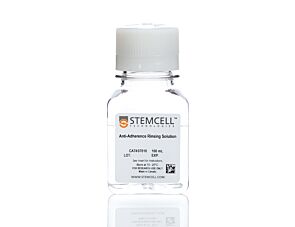 Anti-Adherence Rinsing Solution
Anti-Adherence Rinsing SolutionRinsing solution for cultureware to prevent cell adhesion
-
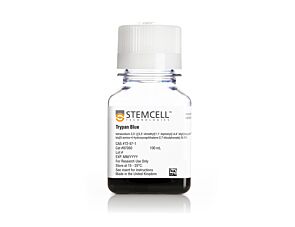 Trypan Blue
Trypan BlueReagent for counting viable mammalian cells
-
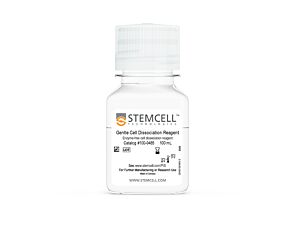 Gentle Cell Dissociation Reagent
Gentle Cell Dissociation ReagentcGMP, enzyme-free cell dissociation reagent
-
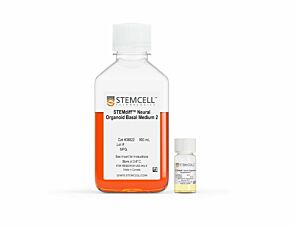 STEMdiff™ Neural Organoid Maintenance Kit
STEMdiff™ Neural Organoid Maintenance KitCell culture medium kit for long-term maintenance and maturation of patterned neural organoids
-
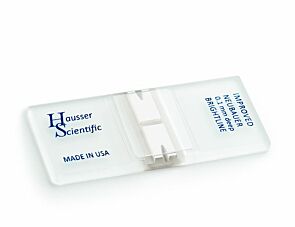 Hausser Scientific™ Bright-Line Hemocytomet...
Hausser Scientific™ Bright-Line Hemocytomet...Counting chamber with 2 cover glasses
-
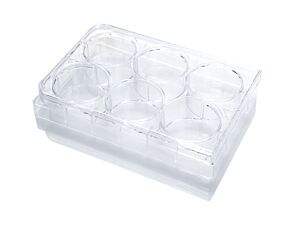 Ultra-Low Adherent Plate for Suspension Cultu...
Ultra-Low Adherent Plate for Suspension Cultu...Sterile, flat-bottom plate, with ultra-low adherent surface for suspension cultures, with lid; 6-well format
-
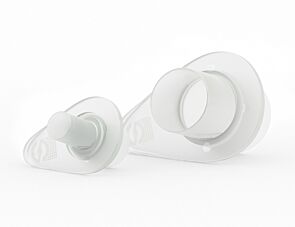 Reversible Strainers
Reversible StrainersReversible strainer for filtration of single cells and isolation of cellular aggregates, including embryoid bodies and spheroids
-
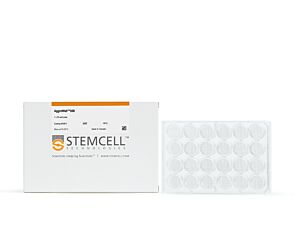 AggreWell™800
AggreWell™800Microwell culture plates for easy and reproducible production of embryoid bodies and spheroids
-
 DMEM/F-12 with 15 mM HEPES
DMEM/F-12 with 15 mM HEPESDulbecco's Modified Eagle's Medium/Nutrient Ham's Mixture F-12 (DMEM/F-12) with 15 mM HEPES buffer
-
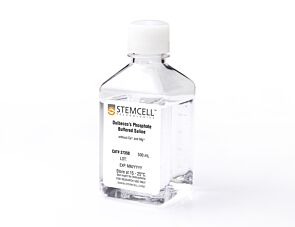 D-PBS (Without Ca++ and Mg++)
D-PBS (Without Ca++ and Mg++)Dulbecco’s phosphate-buffered saline without calcium and magnesium
-
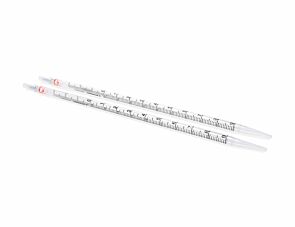 Falcon® Serological Pipettes, 10 mL
Falcon® Serological Pipettes, 10 mLSterile polystyrene pipettes for cell culture
-
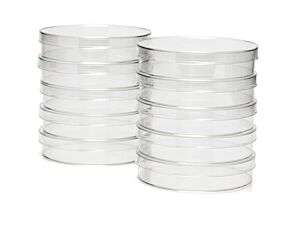 Culture Dish, Non-Treated
Culture Dish, Non-TreatedSterile, flat-bottom, clear polystyrene non-treated dish with lid; 35, 60, or 100 mm formats
-
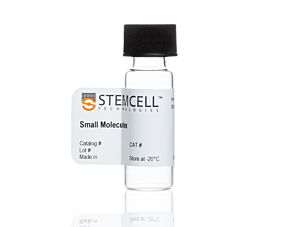 Y-27632 (Dihydrochloride)
Y-27632 (Dihydrochloride)RHO/ROCK pathway inhibitor; Inhibits ROCK1 and ROCK2
-
Labeling Antibodies
Compatible antibodies for purity assessment of isolated cells
Overview
Adapted from protocols by Dr. Sergiu Paşca, the brain-region-specific organoids generated with this kit are three-dimensional in vitro models with a cellular composition and structural organization representative of the developing human midbrain. They are consistently sized with reproducible morphology between various cell lines, and provide a reliable model for the study of dopaminergic neurons within a functional 3D system.
Midbrain organoids can be combined with striatal organoids generated using the STEMdiff™ Dorsal Forebrain Organoid Differentiation Kit with additional patterning factors to generate midbrain-striatal AssemBloid™ cultures. Organoids can be maintained with STEMdiff™ Neural Organoid Maintenance Kit to support long-term culture survival (> 50 days) for predictive assays, high-throughput phenotypic screening, and neurotoxicity assays.
More Information
| Safety Statement | CA WARNING: This product can expose you to Progesterone which is known to the State of California to cause cancer. For more information go to www.P65Warnings.ca.gov |
|---|
Data Figures
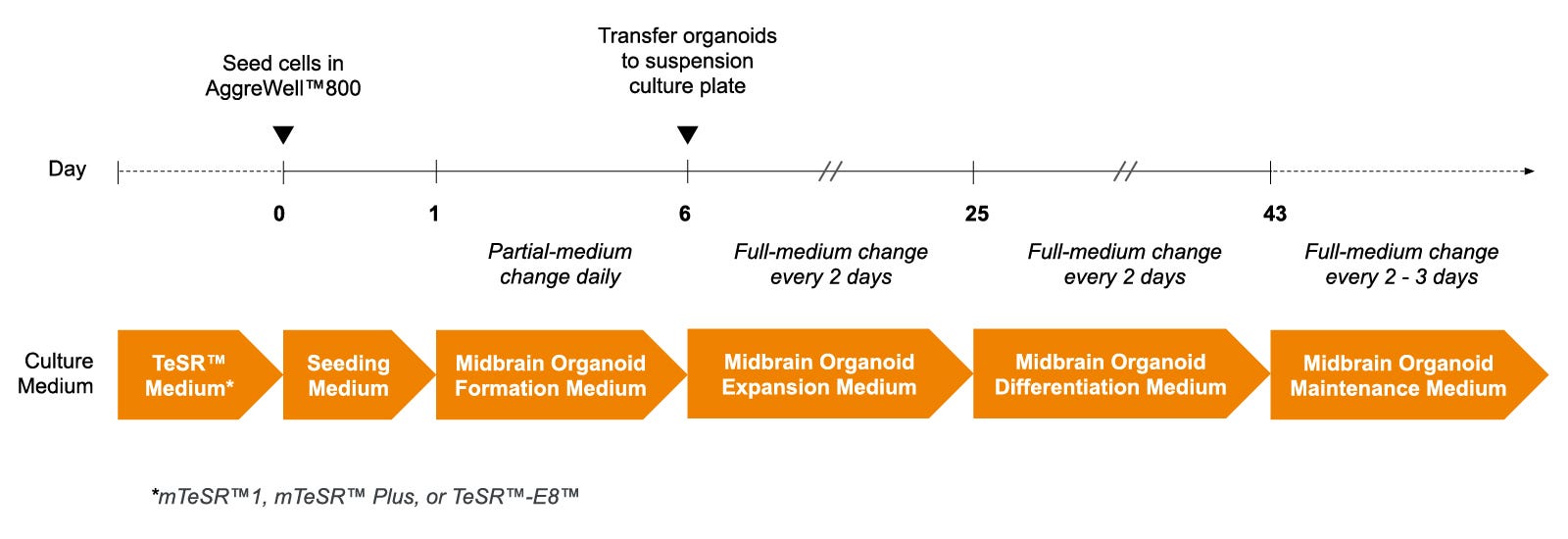
Figure 1. Schematic for the STEMdiff™ Midbrain Organoid Differentiation Kit
hPSC-derived midbrain organoids can be generated in 43 days. Organoids are initially formed in AggreWell™800 plates. After 6 days, the organoids are transferred and cultured in suspension, allowing growth and subsequent patterning to the midbrain. Long-term maintenance and further maturation of midbrain organoids can be achieved using STEMdiff™ Neural Organoid Maintenance Kit, see the Product Information Sheet (PIS) for details. hPSC = human pluripotent stem cell

Figure 2. Mature STEMdiff™ Midbrain Organoids Exhibit Brain-Region-Specific Marker Expression and Organization
Representative marker expression in Day 50 organoids produced using STEMdiff™ Midbrain Organoid Kits (left panels) is compared to organoids produced using STEMdiff™ Dorsal Forebrain Organoid Kits. (A) DAPI is used for counterstaining. (B) Midbrain organoids have comparatively less PAX6 expression throughout. Dorsal forebrain organoids exhibit elevated expression of dorsal cortical progenitor marker PAX6, organized radially. (C) Midbrain organoids have elevated expression of floorplate progenitor marker FOXA2 that arranges around pseudoventricular regions (see inset) and (D) marginal zone dopaminergic neuron marker GIRK2 that expands from FOXA2 expressing progenitor zones.

Figure 3. STEMdiff™ Midbrain Organoids Express Catecholaminergic Protein Tyrosine Hydroxylase
Midbrain organoids were generated from human ES cell line H7 and iPS cell line STiPS-F016 using STEMdiff™ Midbrain Organoid Differentiation Kit. Organoids were further matured to Day 50 with STEMdiff™ Neural Organoid Maintenance Kit and are compared to organoids generated with STEMdiff™ Dorsal Forebrain Organoid Differentiation Kit. Both guided organoid types generate neurons that express MAP2, but only midbrain organoids express the catecholaminergic neuron specific marker TH. ES cell = embryonic stem cell; iPS cell = induced pluripotent stem cell; TH = tyrosine hydroxylase

Figure 4. STEMdiff™ Midbrain Organoid Differentiation Kit Supports the Generation of Homogeneous, Reproducible Neural Organoids
(A-F) Representative phase contrast images of midbrain organoids derived from WLS-1C, H7, and STiPS-F016 hPS cell lines using STEMdiff™ Midbrain Organoid Differentiation Kit show uniform size and spherical morphology at Day 25 and Day 50 in vitro. (G) Diameter measurements of midbrain organoids demonstrate reproducibility across different cell lines (mean ± SD; Day 25, n = 21; Day 50, n = 26). hPS cell = human pluripotent stem cell

Figure 5. Neural Organoids Generated with STEMdiff™ Midbrain Organoid Kit Express Key Markers of Brain-Region-Specific Patterning
Single organoids differentiated from multiple cell lines were harvested for RNA at Day 25 and Day 50. ΔΔCT (Fold Change) of midbrain organoids is normalized to TBP and respective dorsal forebrain organoid control (A & B) or respective PSC control (C); mean ± SD, n = 3 - 15. (A) Midbrain floorplate precursor markers FOXA2, LMX1A, and EN1 were elevated in midbrain organoids at Day 25. (B) More mature marginal zone dopaminergic markers NURR1, TH, GIRK2, and PITX3 were elevated at Day 50. (C) Dorsal forebrain marker PAX6 and TBR1 expression is downregulated in Day 25 midbrain organoids. PSC = pluripotent stem cell
Protocols and Documentation
Find supporting information and directions for use in the Product Information Sheet or explore additional protocols below.
Applications
This product is designed for use in the following research area(s) as part of the highlighted workflow stage(s). Explore these workflows to learn more about the other products we offer to support each research area.
Resources and Publications
Educational Materials (16)
Related Products
-
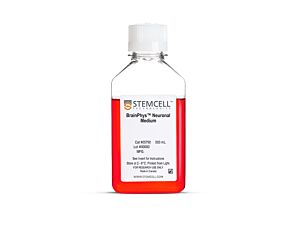 BrainPhys™ Neuronal Medium
BrainPhys™ Neuronal MediumSerum-free neurophysiological basal medium for improved neuronal function
-
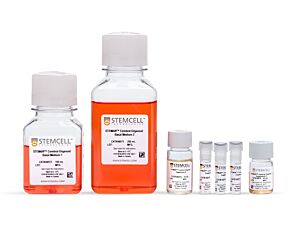 STEMdiff™ Cerebral Organoid Kit
STEMdiff™ Cerebral Organoid KitCulture medium kit for establishment and maturation of human cerebral organoids
-
 STEMdiff™ Neural Organoid Maintenance Kit
STEMdiff™ Neural Organoid Maintenance KitCell culture medium kit for long-term maintenance and maturation of patterned neural organoids
Item added to your cart

STEMdiff™ Midbrain Organoid Differentiation Kit
PRODUCTS ARE FOR RESEARCH USE ONLY AND NOT INTENDED FOR HUMAN OR ANIMAL DIAGNOSTIC OR THERAPEUTIC USES UNLESS OTHERWISE STATED. FOR ADDITIONAL INFORMATION ON QUALITY AT STEMCELL, REFER TO WWW.STEMCELL.COM/COMPLIANCE.
CA WARNING: This product can expose you to Progesterone which is known to the State of California to cause cancer. For more information go to www.P65Warnings.ca.gov
















